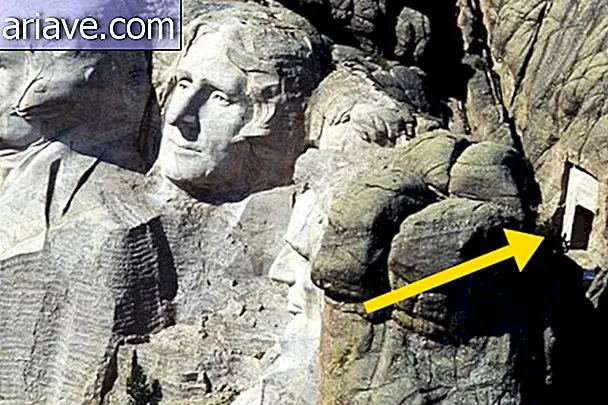Meet 7 parts of humans exposed in museums
Many people who passed through Earth were relevant in their fields and, not without reason, are remembered to this day. At first, it is sufficient that the works created by these very relevant human beings be maintained and passed on to the younger generations, but some had the honor - depending on the point of view - of having their bodies preserved in museums so that they could be observed by all. .
In some cases keeping bits and pieces of people relevant to world history makes some sense, but maintaining that kind of exposure can be quite bizarre. Therefore, below we list 7 people who have parts of their bodies on display around the world.
1. Grigori Rasputin's penis

We could not get a better start on this list if we do not remember that Grigori Rasputin's penis is on display at the Erotic Museum in St. Petersburg, Russia. He was a healer and adviser to the Romanov family before being assassinated in 1916.
We talked about him here at Mega, but beyond all his eccentricity, there was another question that caught his eye: his 33 cm long penis. Turning from hand to hand and with various stories about how and why he was removed from his body, the member eventually arrived at the museum in 2004 after being bought by a Russian doctor.
2. Albert Einstein's Brain

No one doubts the genius of Albert Einstein, but his ideas would have arisen because he has a brain with different composition or because of its formation and worldview? Perhaps science may one day explain this question, for after the death of the German physicist in 1955, pathologist Thomas Harvey withdrew — or rather stole — the brain and eyeballs from the corpse.
This happened against the wishes of the family and Einstein himself, who wished to be cremated so that no cult was created around him. Subsequently, the family allowed the brain to be kept in a museum for strictly scientific reasons. The organ was separated into 100 slices and placed on glass slides, ensuring its conservation for future studies.
3. Galileo Galilei Tooth and Fingers

The famous astronomer died in 1642, but in 1737 his body was moved to a new tomb. During this process, admirers stole three fingers, a tooth, and a vertebra from the late Italian. One finger ended up on display at the History of Science Museum in Florence, Italy. The other parts were under private guard until 2009, when the museum decided to order them to keep them safe. The vertebra belongs to the University of Padua, but is not on display.
4. Antonio Scarpa Head

The Italian anatomist and neurologist worked all his life at the University of Pavia, where he was not much loved by his colleagues. Known for his arrogant manner, he spread rumors about his disaffections and only offered opportunities to his friends and family. When he died in 1832, his autopsy was conducted by one of his assistants, who removed his head, fingers, and urinary tract. The reason for this strategic retreat is unknown, but the parts are now on display in the university museum.
5. Napoleon Bonaparte's Penis

The preserved members of personalities seem to follow a logic and say a lot about our society. It was no different with Napoleon Bonaparte, who lost his penis during his autopsy. Unlike Rasputin, the French leader was not a reference when it comes to size - the limb was only four inches.
Seventeen people witnessed the removal of the phallus, which was left under the care of the priest who conducted his burial. In the early 20th century, it was even exhibited at the Museum of French Art in New York, but was purchased by John J. Lattimer in 1977 and is still under his care today.
6. Chief Mkwawa's Skull

Chief Mkwavinyika Munyigumba Mwamuyinga, also known as Chief Mkwawa, is remembered to this day for his resistance to German colonization, which took place in what is now Tanzania in 1891. He fought bravely to defend his people and even killed a commander of High rank of German army in battle. Unfortunately, it was very difficult to fight European war technology, and it was cornered; In 1898, he shot himself in the head.
The Germans sent the commander's skull to Berlin. The Hehe fought alongside England during World War I, and after the conflict one of the provisions of the Treaty of Versailles was the return of Chief Mkwawa's skull to its origins. After difficulties in obtaining the resistance symbol, it is currently on display in a museum in Tanzania.
7. Hari Wood Skull

Known as one of the greatest spies of the twentieth century, it is still unknown to which side Mata Hari was accountable: France or Germany. In official history, she was executed in 1917 by the French, accused of being a German spy.
Some historians accuse the French of using the woman as an excuse for defeats during World War I battles, as she was a prostitute who dealt with high-ranking German officers. His body was used for study, but his head was removed and placed in an anatomy museum in Paris, where he disappeared. To this day the whereabouts remain unknown.
***
Do you know the Mega Curioso newsletter? Weekly, we produce exclusive content for lovers of the biggest curiosities and bizarres of this big world! Register your email and do not miss this way to keep in touch!











